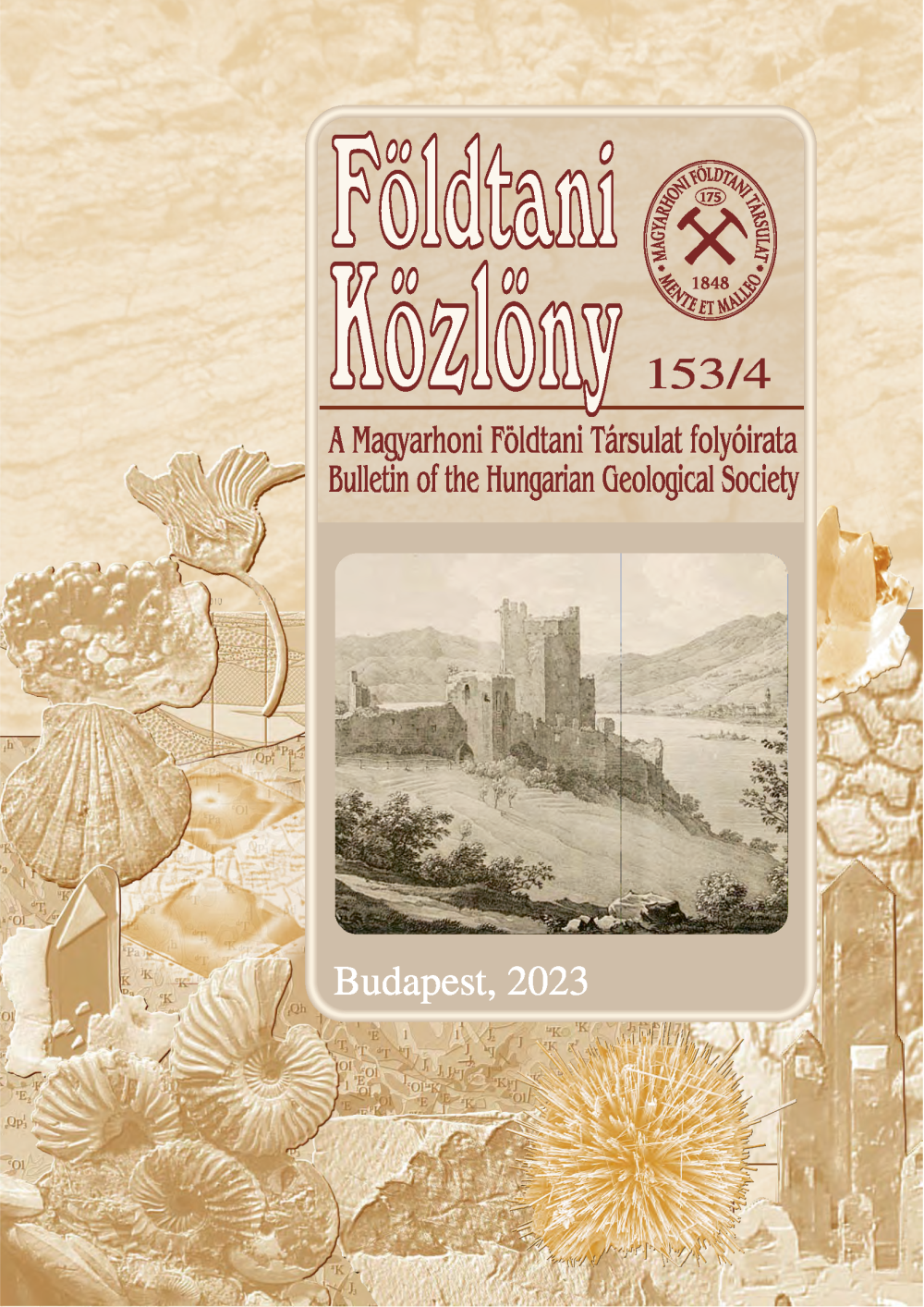Low-grade, medium pressure regional metamorphism of the pelitic succession in the borehole Horváthertelend Hh–1: microstructural and thermobarometric evidences
Abstract
In this study the microstructural and thermobarometric investigation of the metapelitic sequence of the Horvat hertelend Unit (borehole Hhm1; NW foreland of the Mecsek Mts., Hungary) were carried out. The well Hh–1 cuts through Cenozoic sediments and sedimentary rocks across 720 m. Below the depth 720 m a black slate sequence with metasandstone intercalations was drilled in a thickness of 70 m. The slate is underlain by a dark grey polymictic conglomerate-sandstone sequence. The slate and conglomerate bodies were correlated with the Silurian flysch-like Szalatnak Slate Formation, forming a unique low-grade metamorphic body in the region.
In this work the upper slate sequence was studied which consists of mainly black – dark grey, in the lower section pale grey, slate with metagreywacke and metasiltstone lenses. The studied rocks contain grain supported, well sorted arkose clasts from millimetre to centimetre scale. The studied slate samples have K-white mica + chlorite + quartz + albite + anatase } tourmaline mineral assemblage. The metagreywacke lenses and laminas are often folded, and a moderately developed continuous foliation and pressure solution seams are also common. The arkose clasts are strongly flattened and boudinaged. Pretectonic quartz veins are systematically folded, dynamically recrystallized (low-T grain boundary migration recrystallization) and apparently sheared by pressure solution seams.
The full width at half maximum (FWHM) values of the 001 and 002 reflexion peaks of K-white mica and chlorite were measured by XRD in highly oriented <2 μm grain size fraction of the slate. The low FWHM values (Ms001:~0.117 Λ°2Θ, Chl002: ~0.147 Λ°2Θ) and the large crystallite sizes calculated using the Scherrer-equation (Ms001: 1121±70 Å, Chl002: 700± 86 Å) suggest epizonal metamorphism. The b0=6d(060,331) value of K-white mica was determined in the unoriented -2 μm grain size fraction. In the investigated samples the average calculated b0 value ~9.022 Å suggests medium P-T gradients during metamorphism.
The rocks contain large amount of autochthonous carbonaceous material (CM) making possible to carry out Ramanspectroscopic thermometry based on the evolution of CM’s first order Raman bands.
The calculated maximum temperature of the metamorphism can be estimated about 350 °C using three different empirical thermometers.
The presented observations and data suggest low-grade, medium pressure (chlorite zone ~350 °C) regional metamorphism and associated ductile deformation of the metapelitic sequence of the borehole Hh–1.











